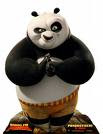* Drop in sales
n 2006, Proton's sales dropped 30.4% from 166,118 in 2005 to 115,538 for the Malaysian market, with a later report indicating a 55% fall of sales to 962.3 million ringgit, its lowest in at least seven years. This allowed Perodua to overtake Proton as the country's largest passenger carmaker for the first time, with a 41.6% market share, while Proton's market share fell from 40% in 2005 to 32% in 2006. In the period ending December 31, 2006, Proton has also suffered three consecutive quarterly losses. Compared to a profit of 86.5 million ringgit in 2005, the car company lost 281.5 million ringgit in 2006. Proton blamed discounts from rivals. Total losses in 2007s financial year climbed to $169 million.
The Employees Provident Fund (EPF) acquired an additional 830,000 shares in a transaction that spanned between January 5 and January 12, 2007
* Exports
Proton exports cars to the United Kingdom, South Africa, and Australia and the company is aggressively marketing its cars in several other countries including the Middle East. Besides that, Proton cars has also been exporting a small volume of cars to Singapore, Brunei, Indonesia, Nepal, Sri Lanka, Pakistan, Bangladesh, Taiwan , Cyprus and Mauritius. 14,706 Proton cars were exported in 2006
Recently Proton returned to Guangdong, China, where it did business in the past but withdrew after having poor sales record. In July 2007, Proton signed an agreement with Youngman Automobile Group Ltd. Co., paving the way for the national carmaker to offer its products and services in China. Under the agreements,Youngman will import 30,000 Gen.2 CBU (completely built-up) units and resell them under its own EuropeStar brand and eventually develop a new range of Made-in-China cars with the engineering services provided through Proton's Lotus. Proton is expected to ship 1500 cars a month for 20 months starting December 2007 to fulfill the order.
Proton began its exports from Malaysia to other right hand drive markets like New Zealand in the late 1980s, but its success was mostly limited to the United Kingdom where it entered the market, along with Ireland, in 1989. They advertised there with the slogan Japanese Technology, Malaysian Style. Proton cars proved popular among budget-oriented motorists, and like Japanese and South Korean models before them, led to the demise of manufacturers such as the Soviet Lada and ex-Yugoslavian (now Serbia) Zastava. By the 1990s, Proton had withdrawn from the New Zealand market after offering only the Saga four-door and Persona five-door models. The company also exited the Irish market in the early 1990s, following limited success in that country. The Persona and Natura models were sold in Chile briefly during the late nineties by a local Nissan importer, but few were sold and the venture ended after two years.[citation needed] Proton sales seem to be slowly declining in the United Kingdom with 2008 sales at 1518 (0.07% share of the market), compared to 2752 in 2002. These figures are insignificant compared to 2008 UK sales of 28,036 for South Korea's Hyundai and 29,397 for Spain's SEAT. Proton enjoyed brief success as a few units of the Saga and Wira were exported to Trinidad & Tobago (Caribbean) during the late 90s where they were used mainly as rentals.
Proton also exports cars to Singapore and Australia, and now produces models in left-hand drive, for export to continental Europe. An entry into the US market was considered by Malcolm Bricklin following Hyundai's successful launch in the mid 1980s. However, exports to the US never materialized, as the cars required hundreds of changes to meet American safety standards in order to secure coverage from auto insurers and satisfy legislative requirements. Proton export models still do not comply to all environmental standards such as emission limits.
The model that Malaysia has followed with the formation of Proton may be used as a case study for rent seeking as tariffs on imported cars rose almost immediately following the formation of Proton. Also AFTA agreements on relaxing entries into the ASEAN marketspace had exemptions specifically for Proton. The Malaysian government gained a three-year exemption for Proton from 2002 to 2005 where entry tariffs had to be lowered to 5%. This was replaced by other duties resulting in no net decrease in automotive prices for importers.
In the United Kingdom, Proton cars suffer somewhat from a poor public image; they are considered poor quality products with very poor residual values compared to rivals from Kia, Chevrolet and Hyundai. In 1998 Proton attempted to change this by introducing the Proton Satria GTi - however, the car was somewhat out of reach to younger drivers due to high insurance premiums (the car was originally a group 16 and was reclassified in 2001 to group 14 but this still resulted in high premiums). The Satria GTi also sported a "Lotus Ride & Handling" badge which, coupled with an average security system, made it easy picking for a potential thief. However, the vehicle was a success as far as handling was concerned which meant that, coupled with its 1.8 16-valve Double Overhead Cam Engine (which produced 133bhp) a number were purchased by Octogon Race Circuits and used as track cars at Silverstone and Brands Hatch racing circuits.
Proton cars were imported into Trinidad and Tobago between 1993 and 2002. They were sold through a local dealer, H.E Robinson Ltd. Only the Saga and Wira ever reached this market with the Wira enjoying modest sales success. The bankruptcy of the dealership forced the exit of Proton from Trinidad and Tobago in 2002.
For a short time, the Proton Wira was marketed in the Philippines via LHD in 1994 with the establishment of Proton Pilipinas through the ASEAN Industrial Joint Venture (AIJV) Scheme before they pulled out due to the 1997 Asian Financial Crisis.
Selamat Tahun Baru 2014
11 years ago


No comments:
Post a Comment